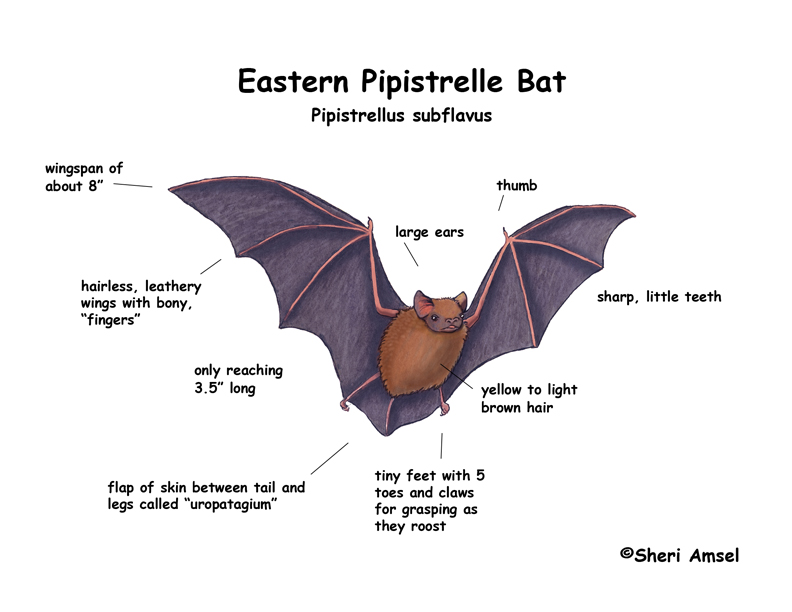

They are found in southeastern Canada throughout the eastern U.S. down to eastern Central America.
They live in open woods near water and roost in caves, trees, rocky cracks, barns and attics.
They have yellow to light brown hair. They are small bats, weighing as little as ¼ of an ounce and only reaching 3.5” long. They have a wingspan of about 8”. Females are larger than males. There is a flap of skin that stretched between the legs and tail called the uropatagium.
They hibernate in forest caves and unlike many other small bats they don’t huddle in large groups. They hibernate alone or in twos and threes. They are nocturnal and come out at night to hunt using echolocation. Echolocation is a kind of radar that uses the bat’s high-pitched calls to bounce off objects. They can actually “see” what is around them by how their calls bounce off their surroundings.
They eat many kinds of insects.
They are sometimes killed by humans.
They mate in late summer or early fall but females store the sperm until spring when they become pregnant about 45 days (gestation). They have 2 pups. They can fly at 3 weeks and are on their own by 5 weeks.
They live up to 8 years in the wild. They are not a threatened species.
Related Resources:
High Resolution Diagram
Kingdom: Animalia
Phylum: Chordata
Subphylum: Vertebrata
Class: Mammalia
Order: Chiroptera
Family: Vespertilionidae
Subfamily: Vespertilioninae
Genus: Pipistrellus
Species: Pipistrellus subflavus
When you research information you must cite the reference. Citing for websites is different from citing from books, magazines and periodicals. The style of citing shown here is from the MLA Style Citations (Modern Language Association).
When citing a WEBSITE the general format is as follows.
Author Last Name, First Name(s). "Title: Subtitle of Part of Web Page, if appropriate." Title: Subtitle: Section of Page if appropriate. Sponsoring/Publishing Agency, If Given. Additional significant descriptive information. Date of Electronic Publication or other Date, such as Last Updated. Day Month Year of access < URL >.
Amsel, Sheri. "Bat (Eastern Pipistrelle) " Exploring Nature Educational Resource ©2005-2024. March 25, 2024
< http://www.exploringnature.org/db/view/466 >

